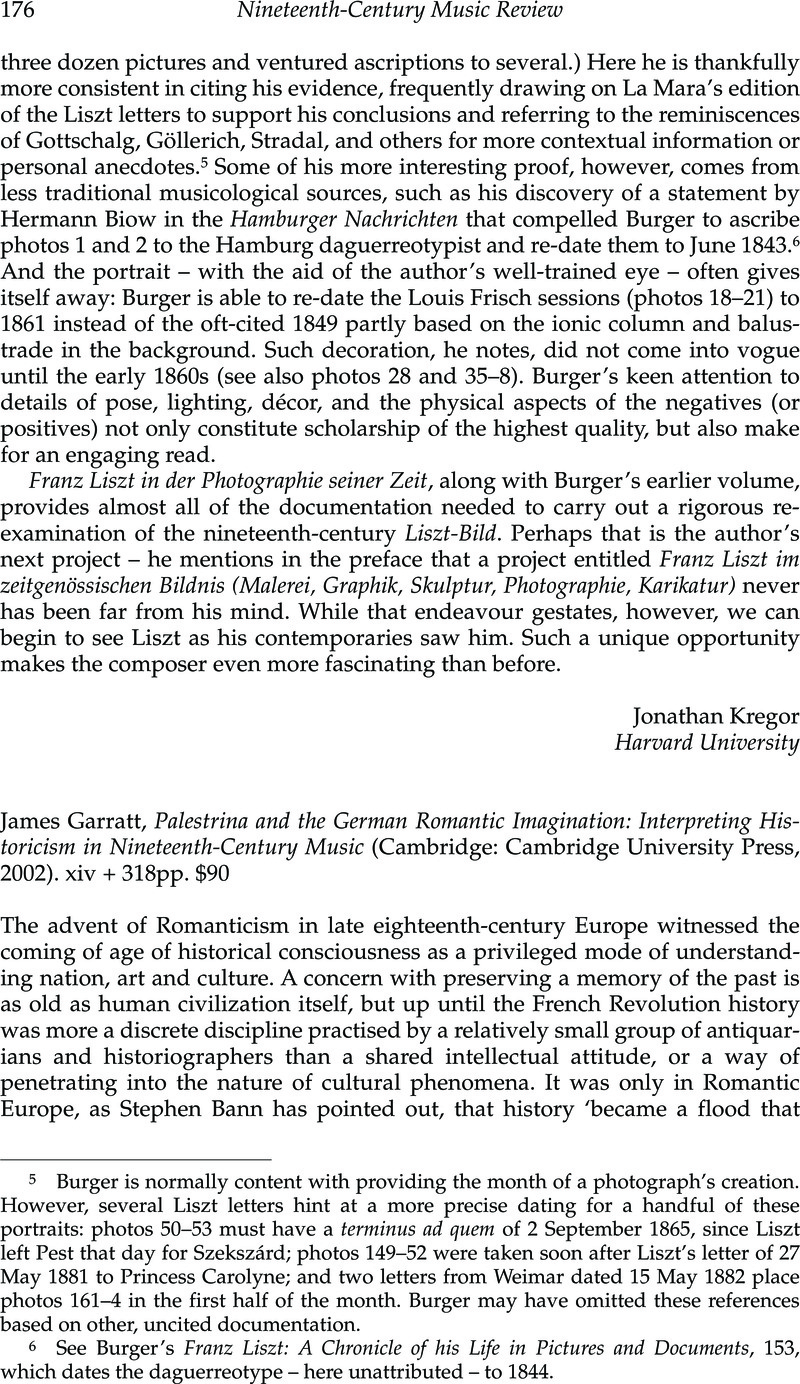No CrossRef data available.
Published online by Cambridge University Press: 13 April 2011

5 Burger is normally content with providing the month of a photograph's creation. However, several Liszt letters hint at a more precise dating for a handful of these portraits: photos 50–53 must have a terminus ad quem of 2 September 1865, since Liszt left Pest that day for Szekszàrd; photos 149–52 were taken soon after Liszt's letter of 27 May 1881 to Princess Carolyne; and two letters from Weimar dated 15 May 1882 place photos 161–4 in the first half of the month. Burger may have omitted these references based on other, uncited documentation.
6 See Burger's Franz Liszt: A Chronicle of his Life in Pictures and Documents, 153, which dates the daguerreotype – here unattributed – to 1844.
1 Bann, Stephan, Romanticism and the Rise of History (New York, 1995), 7.Google Scholar